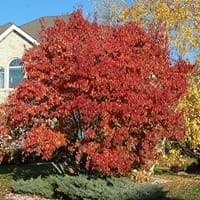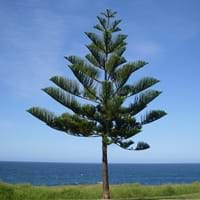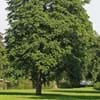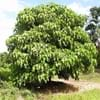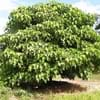Life Span
Perennial
Perennial
Origin
Eastern Europe, Western Asia
Australia
Types
Not available
not available
Habitat
disturbed sites, Forest edges, gardens, Open Forest, Roadsides, Swamps, Urban areas
Subtropical forests
USDA Hardiness Zone
3-7
9-11
Sunset Zone
1a, 1b, 2a, 2b, 3a, 3b, 4, 5, 6, 7, 8, 9, 14
H1, H2, 17, 21, 22, 23, 24
Habit
Oval or Rounded
Pyramidal
Flower Color
Light Green, Ivory
Green
Flower Color Modifier
Bicolor
Bicolor
Fruit Color
Red, Crimson
Green
Leaf Color in Spring
Green
Dark Green
Leaf Color in Summer
Green
Dark Green
Leaf Color in Fall
Yellow, Red, Orange, Gold, Crimson
Dark Green
Leaf Color in Winter
Not Available
Dark Green
Leaf Shape
Lobed
Needle like
Plant Season
Spring, Summer, Fall
Spring, Summer, Fall, Winter
Sunlight
Full Sun, Partial Sun
Full Sun, Partial Sun, Partial shade
Type of Soil
Loam
Loam, Sand
The pH of Soil
Acidic, Neutral, Alkaline
Acidic, Neutral, Alkaline
Soil Drainage
Well drained
Well drained
Bloom Time
Early Spring, Spring
Spring
Tolerances
Drought, Pollution, Salt, Shade areas, Soil Compaction
Drought, Salt, Soil Compaction
Where to Plant?
Ground
Ground
How to Plant?
Layering, Leaf Cutting, Seedlings, Stem Cutting
Tip cutting
Plant Maintenance
Low
Medium
Watering Requirements
Keep ground moist, Medium, Requires consistently moist soil
Allow to dry out slightly between watering
In Summer
Lots of watering
Lots of watering
In Spring
Moderate
Moderate
In Winter
Keep Slightly Dry
Average Water
Soil pH
Acidic, Neutral, Alkaline
Acidic, Neutral, Alkaline
Soil Type
Loam
Loam, Sand
Soil Drainage Capacity
Well drained
Well drained
Sun Exposure
Full Sun, Partial Sun
Full Sun, Partial Sun, Partial shade
Pruning
Pruning in early stages, Remove damaged leaves, Remove dead branches, Remove dead leaves
Prune if you want to improve plant shape, Remove damaged leaves
Fertilizers
All-Purpose Liquid Fertilizer, Bonsai
All-Purpose Liquid Fertilizer, fertilize every 2-3 weeks while growing
Pests and Diseases
Aphids, Borers, Honey fungus, Red blotch, Soft scales
Anthracnose, Branch Droop, Root rot, Yellow Leaves
Plant Tolerance
Drought, Pollution, Salt, Shade areas, Soil Compaction
Drought
Flowers
Showy
Insignificant
Flower Petal Number
Not Available
Not Available
Foliage Texture
Medium
Fine
Foliage Sheen
Glossy
Glossy
Attracts
Deers, Not Available, Rabbits, Squirrels
Not Available
Allergy
Not Available
Not Available
Aesthetic Uses
Beautification, Cottage Garden, Showy Purposes
Showy Purposes, Used as Christmas tree
Beauty Benefits
Not Available
No Beauty Benefits
Environmental Uses
Agroforestry, Wildlife, Windbreak
Shelter for wildlife, Windbreak
Medicinal Uses
Astringent
Not Available
Part of Plant Used
Fruits, Leaves
Whole plant, Wood
Other Uses
As a tea substitute, Florist trade and landscaping, Food for animals, Showy Purposes
Used in Furniture
Used As Indoor Plant
No
Yes
Used As Outdoor Plant
Yes
Yes
Garden Design
Feature Plant, Foundation, Hedges, Mixed Border, Screening / Wind Break, Street Trees
Container, Feature Plant, Houseplant, Screening / Wind Break, Shade Trees, Street Trees, Tropical
Botanical Name
Acer ginnala
ARAUCARIA heterophylla
Common Name
Amur Maple
Norfolk Island Pine
In Hindi
अमुर मेपल
नोरफोक द्वीप पाइन
In German
Amur-Ahorn
Norfolk-Insel Pine
In French
érable de l'Amour
Norfolk Île Pine
In Spanish
arce de Amur
Norfolk Pine Island
In Greek
Amur Maple
Νησί Νόρφολκ Pine
In Portuguese
de bordo amur
Ilha Norfolk Pine
In Polish
klon amur
Norfolk Pine
In Latin
amur acernis
Insula Norfolk Pinus
Phylum
Magnoliophyta
Coniferophyta
Class
Magnoliopsida
Pinopsida
Family
Aceraceae
Araucariaceae
Clade
Angiosperms, Eudicots, Rosids
Not Available
Tribe
Not Available
Not Available
Subfamily
Hippocastanoideae
Not Available
Importance of Amur Maple and Norfolk Island Pine
Want to have the most appropriate plant for your garden? You might want to know the importance of Amur Maple and Norfolk Island Pine. Basically, these two plants vary in many aspects. Compare Amur Maple and Norfolk Island Pine as they differ in many characteristics such as their life, care, benefits, facts, etc. Every gardener must at least have the slightest clue about the plants he wants to plant in his garden. Compare their benefits, which differ in many ways like facts and uses. The medicinal use of Amur Maple is Astringent whereas of Norfolk Island Pine is Not Available. Amur Maple has beauty benefits as follows: Not Available while Norfolk Island Pine has beauty benefits as follows: Not Available.
Compare Facts of Amur Maple vs Norfolk Island Pine
How to choose the best garden plant for your garden depending upon its facts? Here garden plant comparison will help you to solve this query. Compare the facts of Amur Maple vs Norfolk Island Pine and know which one to choose. As garden plants have benefits and other uses, allergy is also a major drawback of plants for some people. Allergic reactions of Amur Maple are Not Available whereas of Norfolk Island Pine have Not Available respectively. Having a fruit bearing plant in your garden can be a plus point of your garden. Amur Maple has showy fruits and Norfolk Island Pine has no showy fruits. Also Amur Maple is not flowering and Norfolk Island Pine is not flowering . You can compare Amur Maple and Norfolk Island Pine facts and facts of other plants too.
